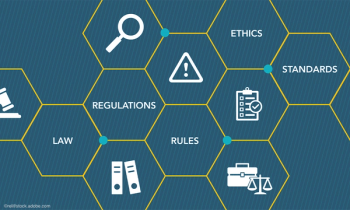
Chart Auditing: Even More Vital in a RAC-Dominated Environment
The increasing aggressiveness of Medicare's so-called recovery audit contractors (RACs) is making it ever more vital that practices have formal coding compliance programs in place.
The increasing aggressiveness of Medicare's so-called recovery audit contractors (RACs) is making it ever more vital that practices have formal coding compliance programs in place, and that these include regular audits of patient charts, according to consultant Nancy Enos.
Enos, speaking Wednesday at MGMA11, noted that RACs are paid on a contingency-fee basis - a percentage (up to 12.5 percent) of the amount in Medicare overcharges that they identify and recover, meaning they have an incentive to thoroughly scrub practice's charts in search of coding errors. Enos said she's lately been receiving a large number of calls from practices that have received so-called "demand letters" from RACs seeking reimbursement for large sums of alleged overpayments. They have so far been particularly aggressive, Enos says, in Texas and Connecticut, but every state now has a RAC contractor working within it.
"They're going after the high-dollar opportunities first," Enos said, "but they will be coming to you eventually because they've been very aggressive."
How can you protect yourself? Make sure you have a compliance program in place that includes regular audits of every provider's chart. A thorough compliance program is more than just a cover-your-bases exercise, she said, because it can also identify areas where the practice is losing money it should collect due to undercoding, and can help a practice understand areas where it might be an outlier compared with Medicare (and other organizations') coding benchmarks.
Enos recommends selecting a sample of at least 10 charts per provider for annual audits, or five for twice-annual audits. Also, any new providers should receive an audit of at least five of their charts shortly after joining the practice.
Then make sure you meet with the physicians to discuss the results, and follow up to make sure that physicians with a high number of wrongly coded charts begin to understand how to code properly and not fall back into old habits. It's often best, Enos said, to have the practice's medical director or managing partner present for meetings with providers to underscore the importance of accurate coding to the practice.
"My biggest frustration in my job is when the practice wants to do an audit but then they never talk to the physicians about their results," Enos said. "What good is that? You might as well send your patient for a CAT scan and then never see them again."
What should you be looking for in audits? Make sure you examine each provider against the coding benchmarks defined by Medicare or another organization that maintains data for your specialty. For example, if a physician's charts indicate that he's coding 50 percent of his office visits at Level 4, while the industry average is 20 percent, that's a problem.
Although up- and down-coding are two of the most common mistakes that Enos sees on charts, many errors are more about insufficient documentation than code selection. Missing chief complaints, poorly documented assessments, illegible or unsigned charts, and lost dictation are among the most frequent mistakes she sees
Newsletter
Optimize your practice with the Physicians Practice newsletter, offering management pearls, leadership tips, and business strategies tailored for practice administrators and physicians of any specialty.




